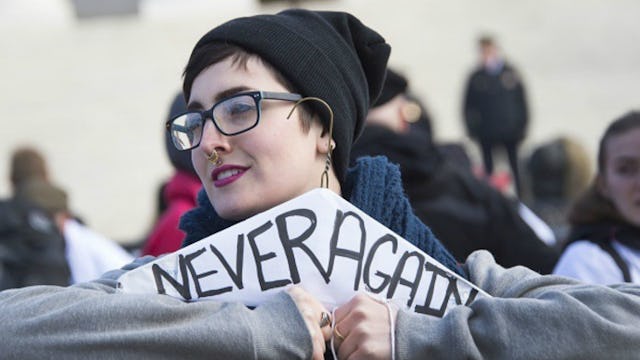WTAF? Half Of All Abortions Worldwide Are Considered Unsafe

A new study from the World Health Organization (WHO) and Guttmacher Institute revealed some horrifying statistics about abortion worldwide. The study, published this September in The Lancet, found that of the nearly 56 million abortions performed around the world each year, almost half of them (a whopping 25.5 million) are considered unsafe.
This is horrifying. Anyone who cares about the health and well-being of women should be sickened by these figures. Absolutely sickened.
Dr. Bela Ganatra, WHO scientist and lead author of the study, pulls no punches when she says that women’s lives are at risk every day — and many die — when abortions are performed in an unsafe manner.
“When women and girls cannot access effective contraception and safe abortion services, there are serious consequences for their own health and that of their families,” explains Dr. Ganatra. “This should not happen. But despite recent advances in technology and evidence, too many unsafe abortions still occur, and too many women continue to suffer and die.”
The study’s researchers looked at abortions performed between 2010 and 2014, classifying the safety of these abortions into three categories: “safe,” “less safe,” and “least safe.” About 55% of abortions around the world were considered safe, meaning that they were performed by a trained medical professional.
Another third of abortions (31%) were considered “less safe” because they were either performed by a trained professional using an outdated, unsafe method (like “sharp curettage”) or because they were performed by an untrained professional using a safe method (like misoprostol, a drug used to induce abortion).
About 14% of abortions worldwide (which amounts to millions of women per year) were considered “least safe” — and this is where women’s lives are at most risk. Abortions in this category were performed by untrained professionals using dangerous and outdated methods like the introduction of foreign objects into the uterus and harmful herbal concoctions.
Really? It’s 2017. How is dangerous, life-threatening bullshit like this still happening to women all over the world?
According to a WHO report from 2008, 47,000 women die each year from botched abortions, which accounts for 13% of maternal deaths worldwide. And as the WHO’s recent report indicates, in addition to fatalities, “[c]omplications from ‘least-safe’ abortions can include incomplete abortion (failure to remove all of the pregnancy tissue from the uterus), hemorrhage, vaginal, cervical and uterine injury, and infections.”
The countries where the “least safe” abortions were most likely to occur were in developing countries, with 97% of the most dangerous abortions occurring in Africa, Asia, and Latin America. It’s important to note that these unsafe abortions were most likely to occur in countries with the least access to birth control for women and also where abortion is illegal or hard to access — which is why arguing that banning abortion would prevent these deaths is a bunch of hogwash. The morality of abortion is obviously a prickly issue for many of us, but it has been proven time and again that making abortion illegal doesn’t stop abortions from happening; it only makes them more deadly.
As the WHO so aptly notes: “In countries where abortion is completely banned or permitted only to save the woman’s life or preserve her physical health, only 1 in 4 abortions were safe; whereas, in countries where abortion is legal on broader grounds, nearly 9 in 10 abortions were done safely. Restricting access to abortions does not reduce the number of abortions.”
One more time for people in the back, restricting access to abortions does not reduce the number of abortions. Read that again, and take note because it’s such an important point and one that we all need to keep in mind, however we feel about abortion.
As the WHO points out, the countries with the safest abortions also have the lowest abortion rates. Why? Because they offer their women sex education, contraception, gender equality, and excellent health services.
“In the high-income countries of North America and Western and Northern Europe, where abortion is broadly legal and health systems are strong, the incidence of unsafe abortions is the lowest globally,” says Dr. Ganatra.
The idea that millions of women each year die or are harmed by unsafe abortion is tragic and unacceptable. And yet, it’s preventable. Sex ed and access to contraception and quality health services have proven time and again to reduce the number of unwanted pregnancies and save women’s lives.
“Making abortion safe is incredibly simple,” Dr. Ganatra tells the Huffington Post. “It can be integrated into basic health care. It’s not a high-resource intervention … it’s not rocket science.”
No, it isn’t rocket science at all. It’s about not being an asshole and taking the health and well-being of women with utmost seriousness and care. Period. And it’s about time that happens for women everywhere.